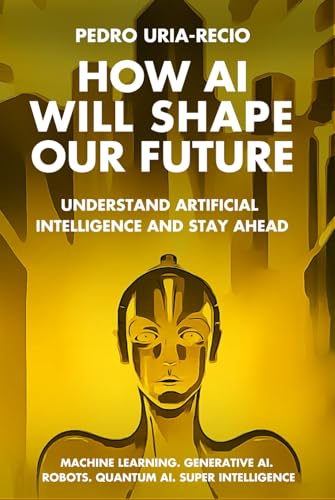What do you think?
Rate this book


How AI Will Shape Our World.
Written in an easy-to-read style accessible to everyone, "Machines of Tomorrow" grounds the reader in a thorough history and description of Artificial Intelligence, enabling an appreciation of its real trajectory and ultimately a deeper level of engagement with the core concept of the book: what should societies expect from AI in the coming decades?
How does AI truly function? How will AI affect employment and education in the near term and mid-term? How will AI affect our society, economy, government, culture, and geopolitics? What are the likely utopian and dystopian outcomes of AI implementations, and who will be impacted? What is really going on with China and the new AI Arms Race? Will Synthetic Biology really lead to human-cyborg coexistence, finally impacting human evolution? What should we be demanding of our leaders now to prepare for the inevitable progress in this technology?
These are just some of the hard-hitting, polemic questions asked and answered by Pedro Uria-Recio, an ex-McKinsey consultant and Chief AI Officer, who for years has been working globally with this technology.
Whether you're a technologist or a homemaker, a businessperson or a student, a voter or a policymaker, or simply curious about the future of humanity, "Machines of Tomorrow" provides essential guidance for navigating the complexities of Artificial Intelligence.
474 pages, Hardcover
First published February 18, 2024
"How AI Will Shape Our Future" is an outstanding read that demystifies the complex world of artificial intelligence. Pedro Uria-Recio's expertise shines through as he breaks down the inner workings of AI in a way that's both comprehensive and accessible.
What impressed me most about this book is its commitment to explaining how AI actually functions. Uria-Recio doesn't just skim the surface; he dives deep into the mechanics of various AI algorithms, from basic machine learning to cutting-edge generative AI. His explanations are clear and digestible, making even the most complex concepts understandable to non-experts.
The author's background in mathematics and engineering is evident in the precision of his explanations. He walks readers through the step-by-step processes that enable AI to learn, make decisions, and generate output. Whether discussing neural networks, deep learning, or natural language processing, Uria-Recio provides concrete examples that illustrate these concepts in action.
I particularly appreciated the sections on generative AI, which offer insight into how systems like GPT-3 and DALL-E create human-like text and images. The author's explanations of the underlying mechanisms are both fascinating and enlightening.
This book goes beyond just explaining current AI technology. It also explores emerging fields like quantum computing and its potential impact on AI capabilities, giving readers a glimpse into the future of the technology.